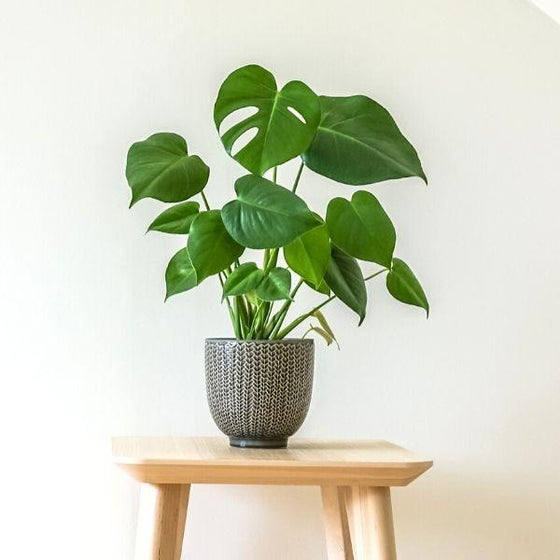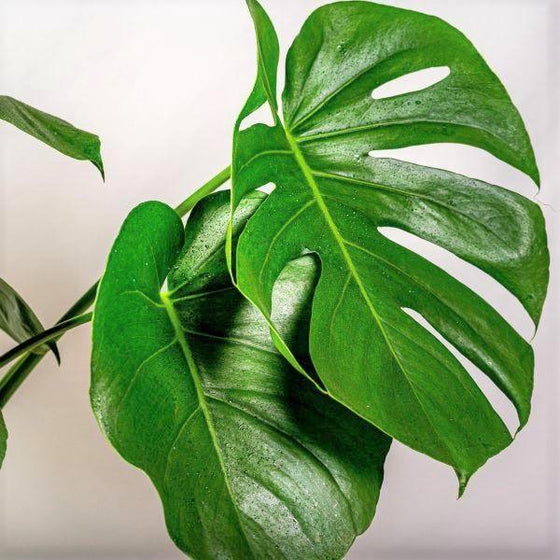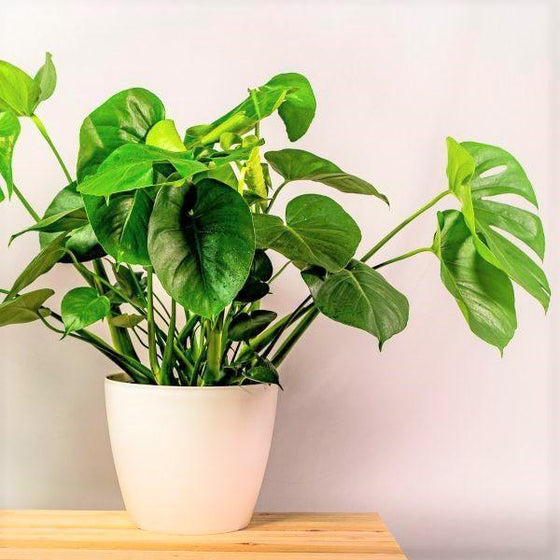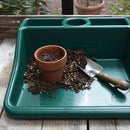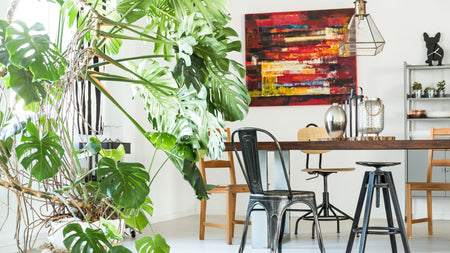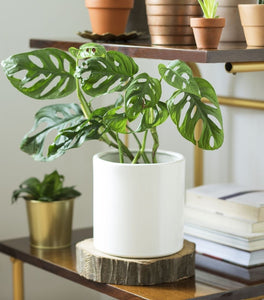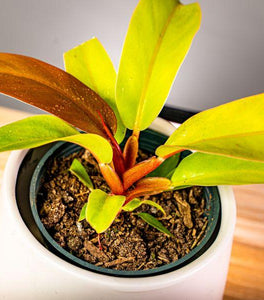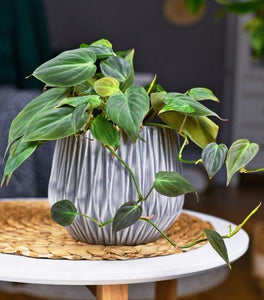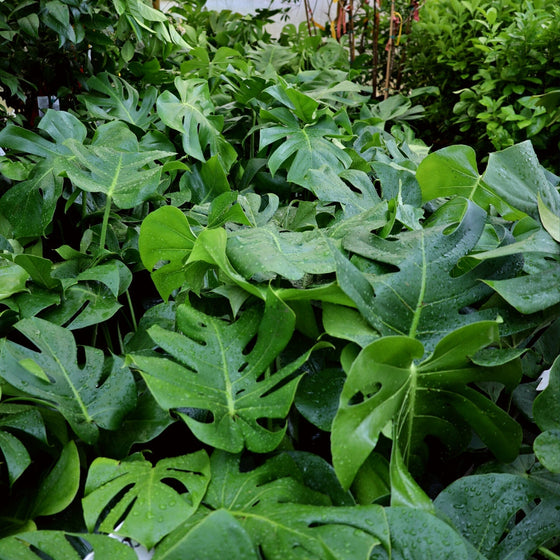
Images Depicted Range in Maturity & Container Size
Pots & Decorations Not Included Unless Otherwise Stated
Monstera deliciosa for Sale Online
Monstera deliciosa, often called the Swiss Cheese Plant or Split-Leaf Philodendron, is a tropical favorite known for its dramatic, large, fenestrated leaves that bring a lush jungle vibe to any indoor space. Its unique leaf pattern, characterized by natural splits and holes, not only adds an exotic flair but also makes it a stunning statement piece for homes, offices, or conservatories. Monstera deliciosa can grow impressively tall, reaching heights of 6 to 8 feet indoors when provided with the right conditions, making it perfect for filling empty corners or creating a striking focal point in any room.
This iconic houseplant thrives in bright, indirect light, though it can also adapt to lower light levels, making it versatile for various spaces in your home. Monstera deliciosa prefers moderate humidity and well-draining soil to keep its roots healthy and strong. Water your Monstera when the top inch or two of soil is dry, allowing it to stay hydrated without becoming waterlogged. With its aerial roots and climbing nature, this plant benefits from a moss pole or trellis to support its upright growth, which will also help showcase its magnificent leaves. Regular care will encourage the Monstera to develop larger leaves with more fenestrations, adding to its natural beauty.
In addition to its visual appeal, Monstera deliciosa is also known for its air-purifying qualities. It helps improve indoor air quality while adding an element of nature to your space. Its tropical look complements a wide variety of decor styles, from modern and minimalist to eclectic and bohemian. Whether you are an experienced plant enthusiast or just starting your indoor plant journey, Monstera deliciosa is a rewarding and eye-catching choice that brings warmth, style, and a touch of the tropics to your indoor garden.
If you fell in love with the Swiss Cheese Plant, check out its sister—the Swiss Cheese Vine! Botanically referred to as Monstera adansonii, this tropical plant is like a Deliciosa Monstera shrunk down and vining.
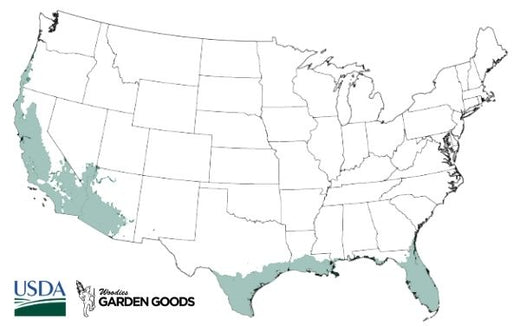
| Hardiness Zone: | 9-11 |
|---|---|
| Mature Height: | 4 to 6 Feet with support |
| Mature Width: | 36 Inches |
| Classification: | Tropical |
| Sunlight: | Fluorescent light to bright, indirect |
| Habit: | Upright, Climbing if given support |
| Flower Color: | Does not flower often indoors |
| Foliage: | Dark green heavily dissected |
| Soil Condition: | Well draining, cactus or succulent mix (part sand) |
| Water Requirements: | Likes to dry out between waterings |
| Uses: | Does well indoors and in low light conditions |
How to Care for Monstera deliciosa
Be sure to read our planting instructions to ensure a healthy and happy Monstera deliciosa for years to come!

What is the best light for Monstera deliciosa Plants?
The best light for Monstera deliciosa plants is bright, indirect sunlight, which allows their iconic fenestrated leaves to grow large and develop deep green coloration. Monstera deliciosa thrives when placed near an east or west-facing window, where it can receive several hours of indirect light each day. Direct sunlight, especially intense afternoon rays, can scorch the delicate leaves, causing them to develop brown spots. If natural light is limited, a grow light can supplement the lighting requirements, ensuring the plant receives enough brightness to thrive and grow vigorously. Although Monstera deliciosa can tolerate lower light conditions, it may grow more slowly and develop fewer or smaller fenestrations on its leaves. For optimal growth and to achieve the distinctive split leaves, it’s crucial to provide consistent, filtered light. Rotate the plant every few weeks to ensure that all sides receive equal light exposure, promoting even growth and preventing the plant from leaning towards the light source. By providing Monstera deliciosa with the right lighting conditions, you can encourage healthy foliage, larger leaf development, and a beautiful, lush indoor display.
How often should I water Monstera deliciosa Plants?
Monstera deliciosa plants should be watered approximately once a week, allowing the top 1 to 2 inches of soil to dry out between waterings. These tropical plants prefer consistently moist soil but do not tolerate waterlogged conditions, which can lead to root rot. During the growing season, typically spring and summer, Monstera deliciosa may require more frequent watering, especially in warm temperatures or low-humidity environments. To determine if your Monstera needs water, insert your finger into the soil—if the top inch feels dry, it’s time to water. Always water thoroughly until you see excess draining from the bottom of the pot, ensuring all the roots receive adequate moisture. In the cooler months of fall and winter, reduce watering frequency, as the plant’s growth naturally slows and it requires less moisture. Overwatering during the dormant season can cause root issues and yellowing leaves. Additionally, the environment plays a significant role in how often to water your Monstera deliciosa; if the air is particularly dry, you may need to adjust your watering schedule to maintain a slightly higher moisture level. Maintaining proper watering practices is essential to keep your Monstera deliciosa healthy, allowing it to grow robustly with the iconic fenestrated leaves that make it such a popular indoor plant.
How do I fertilize Monstera deliciosa?
Fertilizing Monstera deliciosa is essential for promoting healthy growth, lush foliage, and the characteristic fenestrations that make this plant so popular. During the active growing season, typically from spring to early fall, feed your Monstera with a balanced, water-soluble fertilizer, such as a 20-20-20 formula, once a month. Dilute the fertilizer to half the recommended strength to avoid damaging the roots and apply it after watering to prevent fertilizer burn. A higher nitrogen content will encourage vibrant leaf growth, while phosphorus and potassium will support overall plant health and strong root development. In the winter months, Monstera deliciosa enters a period of slower growth and requires less feeding. During this time, reduce or stop fertilizing to avoid overstimulating the plant. If the Monstera shows signs of nutrient deficiency, such as pale or slow-growing leaves, you can provide a light feeding to give it a boost, but generally, it is best to wait until spring to resume regular fertilization. Alternatively, organic fertilizers like compost tea or fish emulsion can be used for a more natural approach. Proper fertilization ensures that your Monstera deliciosa stays healthy and vigorous, with large, glossy leaves that add a tropical charm to any indoor space.

What is the best soil for Monstera deliciosa plants?
The best soil for Monstera deliciosa plants is a well-draining, nutrient-rich mix that retains moisture without becoming waterlogged. A combination of peat moss, perlite, and pine bark works exceptionally well for this tropical plant, providing the right balance of drainage and moisture retention. Peat moss helps maintain adequate moisture, while perlite ensures good aeration, preventing the roots from sitting in soggy conditions that could lead to root rot. Pine bark adds organic matter and helps create a slightly acidic environment, which Monstera deliciosa prefers for optimal growth. A high-quality aroid or indoor plant potting mix, which typically contains these components, is also a great option for ensuring your plant thrives. In addition to the right soil mix, it's important to choose a pot with adequate drainage holes to allow excess water to escape. Monstera deliciosa is prone to root issues if the soil becomes too compact or stays too wet, so providing a loose, airy soil structure is essential for its health. You can also add orchid bark or charcoal to enhance soil aeration further, which helps prevent compaction and keeps the roots healthy. The combination of a well-draining soil mix and proper potting practices will encourage the plant's vigorous growth, leading to the development of large, iconic leaves with beautiful fenestrations that make Monstera deliciosa a popular choice for any indoor jungle.

